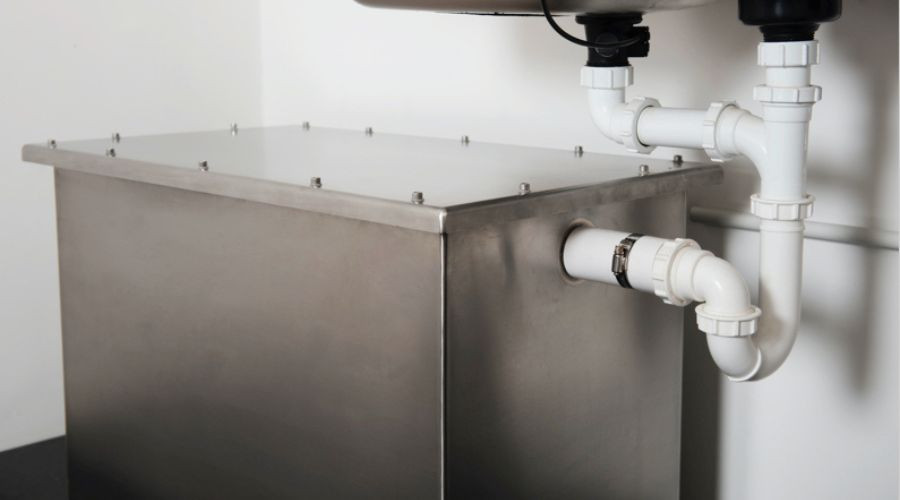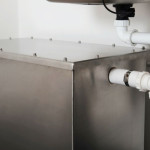How to Know When a Grease Trap Needs to Be Cleaned and Pumped
Cooking grease is a serious concern when it enters the plumbing. Grease can cling to the walls of drain pipes in homes and commercial businesses, where it hardens to form nasty clogs. Even if the plumbing in a home or business can cope with the problems posed by grease in the pipes, grease wreaks even more havoc as it enters the municipal sewer, where it can cause huge backups and terrible odors as it rots.
With all the liabilities of cooking grease, it should be kept out of drain and sewer lines. To accomplish this, most businesses, especially those in the food industry, must be equipped with a grease trap device.
Grease traps do the unpleasant job of trapping cooking grease before it gets into drain and sewer plumbing. As the grease cools, it floats to the top of the grease trap, where it sits and waits to be removed. Eventually, a grease trap will be full and must be pumped out by a professional. Doing this too often is an unnecessary expenditure for a business, but waiting too late can cause many problems. Here are the most common signs that a grease trap is ready to be pumped.
Slow Drainage
 Grease is a type of fat that is liquid at warm temperatures but solid at cooler temperatures. Grease finds its way into plumbing when poured down the drain or when very greasy dishes are washed. When grease enters the plumbing, it cools and coalesces on any nearby surface. The greasy buildup can then cause debris to stick to the sides of pipes, where nasty clogs are formed.
Grease is a type of fat that is liquid at warm temperatures but solid at cooler temperatures. Grease finds its way into plumbing when poured down the drain or when very greasy dishes are washed. When grease enters the plumbing, it cools and coalesces on any nearby surface. The greasy buildup can then cause debris to stick to the sides of pipes, where nasty clogs are formed.
When a grease trap operates properly, water should flow down drain pipes with no problem. If grease is allowed to build up inside the trap, excess grease can enter the drains, where it starts to foul up the line. Cleaning the trap as often as necessary is the only way to prevent this, so owners should always watch for slow drainage.
Foul Smells
 Another sign that a grease trap needs to be cleaned is the heinous odor that rotting grease puts off. In a normal environment, p-traps prevent odors from backing up from the plumbing into a room. If the grease trap is full, the foul smell emanating from the grease inside will not be contained. If there is any odor near a grease trap, it is overdue for pumping.
Another sign that a grease trap needs to be cleaned is the heinous odor that rotting grease puts off. In a normal environment, p-traps prevent odors from backing up from the plumbing into a room. If the grease trap is full, the foul smell emanating from the grease inside will not be contained. If there is any odor near a grease trap, it is overdue for pumping.
Grease Trap Has Reached a Quarter of its Capacity
Experts recommend that grease traps be cleaned monthly and quarterly, depending on the need. Cleaning it too often wastes money, while waiting too long can incur other expenses like sewer line cleaning. The best way to determine the frequency of grease trap cleaning is to observe the level inside the trap. When the capacity reaches about 25%, it is time to schedule grease trap pumping. By spotting these signs and caring for their grease traps, owners can keep their costs low while still doing their part to protect the plumbing system.
About Capital City Septic Services
Capital City Septic Services is a fully qualified septic and grease trap cleaning service. They cater to any schedule and work on weekends to minimize the interruption that sewer problems or grease trap cleaning bay cause. Call today for grease trap service in Tallahassee, FL.


























